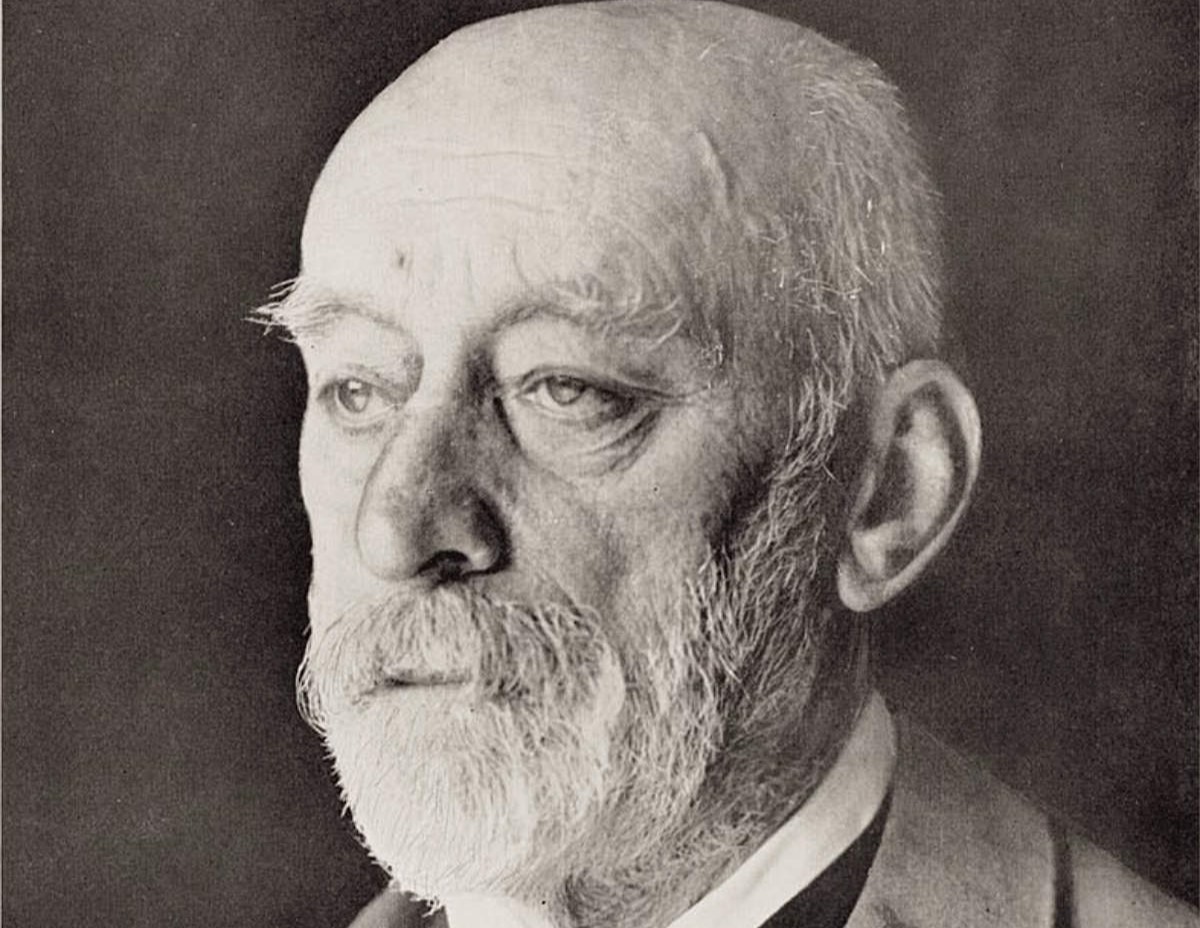The architect who thinks that the brick does not need ornaments: Who is Hendrik Petrus Berlage?
Dutch architect and urban planner. He has become one of the pioneers of modern architecture with his understanding of avoiding ornamentation and based on the properties of the material.

He was born in February 1856 in Amsterdam. (1856-1934) He completed his professional education at the Zurich Polytechnic between 1875-187 as a student of Cuypers (1827-1921); He was impressed by the views of G Semper. After a European tour that included Italy, Austria, and Germany, he started working as an independent architect in Amsterdam in 1889.
Hendrik Petrus Berlage (21 February 1856 – 12 August 1934) was a Dutch architect. He is considered one of the fathers of the architecture of the Amsterdam School.
He also dealt with furniture design, as he thought that he formed a whole with architecture. In the early 1900s, he was interested in urban planning and especially focused on the development of residential areas. After his study trip to the USA in 1911, he pioneered the transfer of the innovations of Sullivan and Wright to Europe. He took part in the founding of CIAM (Congres Internationaux d'Architeeture modern-International Congress of Modern Architecture) in 1928. He died in Den Haag on August 12, 1934.
In the early works of Berlage, the strong, simple, and massive appearance of the Roman style is dominant. Cradle arches and wide wall surfaces show this effect. In this respect, he approaches the US architect H. H. Richardson. However, although he was influenced by the Roman style, he strongly opposed the historicist trend that was prevalent in 19th-century European architecture, that is, the imitative repetition of styles from the past. The Amsterdam Stock Exchange considered his most important work, is not completely cut off from the past; It carries traces of both the Roman style and 16th-century architecture. However, these effects of the past were handled in a very free and original way, and the structure, with some of its qualities, heralded the independent experiments of the future. For example, in the main hall, beside brick, light-colored stones were used in some places, and the steel construction of the roof was left bare. This feature reflects Berlage's tendency towards simplicity, which was also found in his early furniture drawings.
Reacting to the unnecessary ornamentation of the 19th century, Berlage preferred a rational attitude in architecture. That is why it gives place to large, simple masses and flat but richly textured surfaces in its structures dominated by geometric lines. Especially the interior arrangements are impressive.
In addition to his rational attitude, Berlage advocated identifying and stating the problems of architecture honestly. He wanted the same honesty to be shown in the use of materials and even objected to covering materials such as plaster. He maintained this understanding of preserving the properties of the material, even in private housing constructions. Starting from his first works, the main material he used for a long time was brick. Later, he continued the same principles and focused on concrete.
The rational approach that Berlage advocated and implemented influenced Picter Oud and the De Stijl group in the Netherlands. On the other hand, some aspects of the brickwork and the decorations integrated with the building, especially in his early works, inspired the expressionist attitude of Michael de Klerk (1884-1923) and the Amsterdam School, whom he would later be influenced by.
The influences of Sullivan, Wright, and the young Dutch Expressionists led to a renewal of Berlage's style. It is possible to watch this renewal in his last important work, the Municipal Museum in Den Haag. Nevertheless, it should be noted that Berlage's relationship with new movements is limited.
In addition to Berlage's practices, he has also been influential in the field of architecture with his publications and speeches. His own views were also significantly influenced by the social conditions of the period in which he lived. According to him, for architecture to be a stylistic art, a social environment integrating religion or a similar element is necessary. In his own time, he thought that commercial life provided this integrative function.
The influence of Berlage with his works and thoughts has made him one of the pioneers of modern architecture. In particular, many of the works of Dutch architects, despite their stylistic differences, are largely derived from his work.
WORKS (mainly):
Damrah Trade Block, 1893 and 1902-1903, Amsterdam;
Amsterdam Stock Exchange, 1897-1903;
Henny House, 1898, Den Haag;
Dairy, 1914, Zuid Laren;
Humanity Pantheon Design, 1915;
Christian Science Church, 1925-1928, Den Haag;
Municipal Museum, 1930-1935, Den Haag.
Urban Planning:
South Amsterdam, 1902 and 1915;
Den Haag, 1908 and 1924;
Rotterdam, 1922;
Utrecht,
Book:
Gedanben über den Stil in der Bankiost, 1905, (“Reflections on Style in Architecture”);
Grundlagen and Entwickluig der Architektur, 1908, (“The Foundations and Development of Architecture”);
Schoonbetd en Samenleving, 1910, (“Beauty and Community Life”);
Stndies över Baukunst, Stijl en Samenleving, 1910, (“Investigations on Architecture, Style, and Community Life”);
Besehouivingen commends Bowu'hunst en baar Ontivikkeling, 1911, (“Reflections on Architecture and Its Development”);
Americananscbe Reisherinneringen, 1913, (“A Travel Memoirs of America”);
Hut Wezen der Bouzvkunst en baar Gescbiedenisy 1934, (“Architecture and its History”).
Hendrik Petrus Berlage: Father of Modern Dutch Architecture
https://theculturetrip.com/europe/the-netherlands/articles/hendrik-petrus-berlage-father-of-modern-dutch-architecture/
